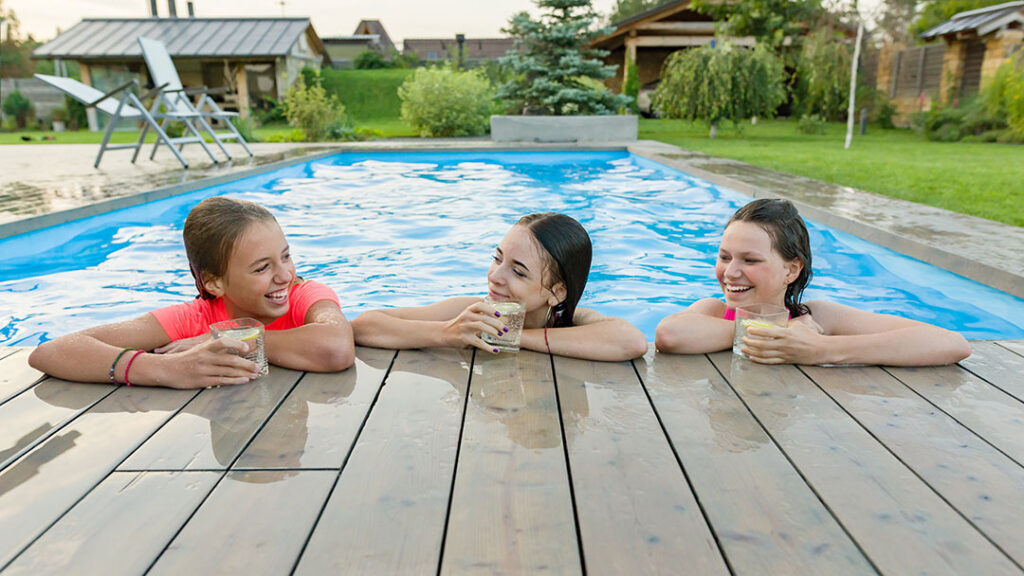There’s something truly special about winding down on the deck, watching the kids play in the yard as the sun dips below the horizon. A well-designed outdoor space not only adds value to your home, but also gives your family a peaceful place to connect – with each other and with nature.
If you’re considering building a deck, it’s worth considering how your choices might impact the environment, especially the local wildlife your kids love spotting in the backyard. One of the biggest decisions is what kind of materials to use.
While traditional hardwood decking looks beautiful, it often comes at a high environmental cost. Tropical hardwoods, in particular, have been a popular choice for years—but their harvesting can contribute to deforestation and long-term damage to precious ecosystems.
As parents, many of us are thinking more about the kind of world we’re leaving for our children. Choosing fast-growing timber from ethically managed plantations is a step in the right direction—but it’s not always as straightforward as it sounds. Even products labelled as “sustainable” can be tricky to verify, so it’s essential to do some research before making a purchase.
So, what is a suitable substitute for timber decking?
In recent years, composite decking materials have gained favour as a substitute for timber decking. As a result of technical improvements, these things are now more inexpensive, durable, and, most importantly, environmentally friendly.
However, the relative environmental friendliness of composite decking vs conventional timber decking remains debatable.
Let’s examine some of the environmental benefits of using composite decking materials.
Composite wood decking is made from recycled base materials
If you love the look of timber but want to make a more sustainable choice, composite decking could be the perfect option. It’s designed to mimic the feel and appearance of real wood—without the environmental downsides.
Sustainable composite decking is made from a blend of recycled plastic and reclaimed wood materials, like sawdust and wood offcuts that would otherwise be destined for landfill or burnt. By giving these by-products a second life, composite decking helps reduce waste and the demand for newly harvested timber, meaning fewer trees cut down and more forests left standing for future generations to enjoy.
But it’s not just wood that gets a second chance. Many composite decking boards also include recycled plastics—think old milk bottles and other HDPE plastics that can’t be turned back into bottles but still have plenty of life left in them. Thanks to advances in building materials, those everyday plastics can now be transformed into something strong, long-lasting, and family-friendly.
Choosing composite decking is a simple way to keep plastic out of landfills and oceans—something that matters when you’re trying to raise kids who care about the planet. It’s a small step at home that can have a lasting impact.

Composite decking works well around the pool
Environmentally friendly production methods
It’s not just about what composite decking is made from that matters, but how it’s made, too. Even if a product uses recycled materials, it’s not truly eco-friendly if it relies on energy-intensive processes or harsh chemicals.
The good news? Many high-quality composite decking options are now produced with sustainability in mind. Unlike traditional pressure-treated timber, they’re not soaked in toxic chemicals that can leach into your backyard. The manufacturing process is designed to be efficient, using minimal water and energy, and even the small amount of waste that’s created can often be recycled back into new boards.
The recycled materials undergo a thorough cleaning process to remove impurities, resulting in a strong, long-lasting product that requires minimal upkeep. That means fewer weekends spent sanding and sealing—and more time enjoying the outdoors with your family.
Reduced need for chemicals in maintenance
Composite decking is much easier to maintain than traditional wood decking. Regular wood maintenance methods, such as oiling, painting, and sealing, are unnecessary. Furthermore, it does not require chemical treatments to prevent termite, rot, and mould damage.
As a result, composite decking is more environmentally friendly because it requires fewer potentially hazardous chemicals derived from fossil fuels for cleaning and maintenance.
Sturdy and long-lasting
When choosing ecologically friendly building materials, durability is essential. The longer a thing lasts, the better it can justify the energy and materials used in its manufacture.
Composite decking often lasts much longer than traditional wood decking. Composite decking is more durable than wooden boards, making it less susceptible to decay, fungus, and vermin, as well as warping, splitting, and splinting. Therefore, your deck will last longer and need fewer resources for replacement or repair.
The sustainable option
There you have it. Composite decking is the ideal material for environmentally conscious homeowners due to its long lifespan, low maintenance requirements, eco-friendly manufacturing process, and use of recycled materials.
Spanning Brisbane, Gold Coast, Sunshine Coast and beyond, Kids on the Coast is an online guide and printed free magazine for parents. With kids events and activities, attractions & things to do with kids, schools and education, school holiday guides, health & wellbeing for families, parenting and lifestyle news. Located on Gold Coast, Sunshine Coast & Brisbane, QLD.


